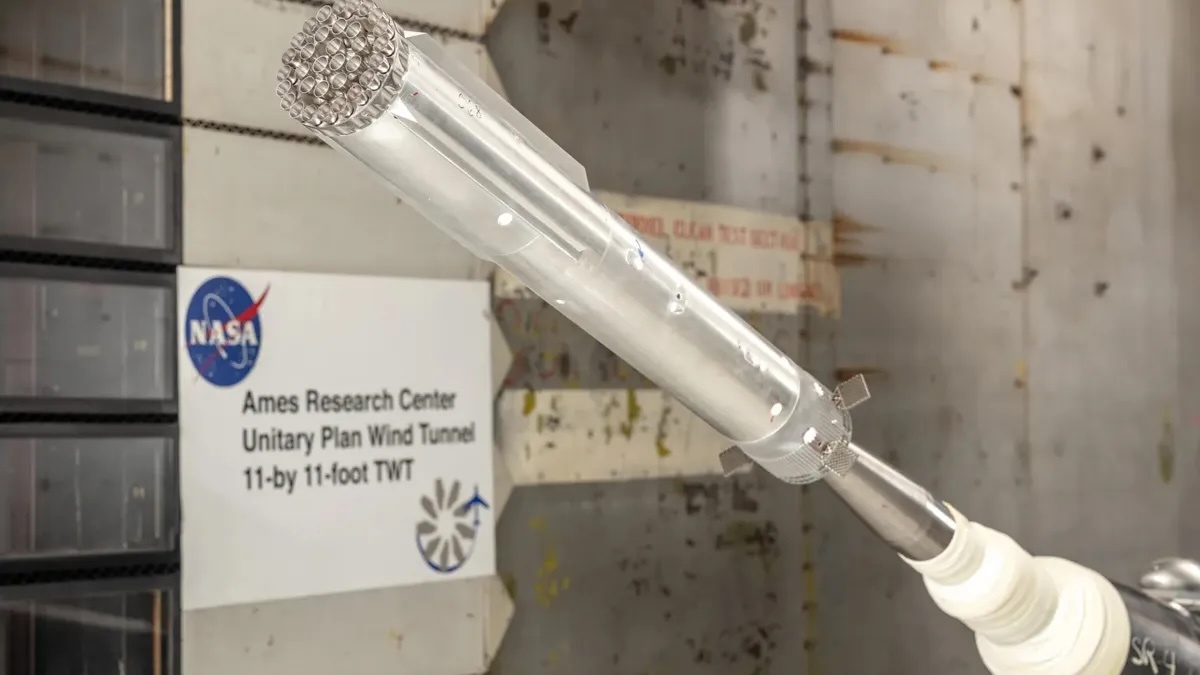15.09.2024
A model of SpaceX's Starship Super Heavy rocket that will launch future Artemis missions to the moon has passed wind tunnel testing, marking another milestone in its development.

A 1.2% scale model of the Super Heavy rocket was put to the test in the transonic Unitary Plan Wind Tunnel at NASA's Ames Research Center in California's Silicon Valley. (Image credit: NASA)
A model of SpaceX's Starship Super Heavy rocket has passed NASA wind tunnel testing, marking another milestone in its development as part of plans to launch future Artemis missions to the moon.
NASA tested a 1.2% scale model of the Super Heavy rocket in the transonic Unitary Plan Wind Tunnel at the space agency's Ames Research Center in California's Silicon Valley. The model was subjected to high-speed forced air, simulating the air resistance and flow the booster will experience during different stages of flight, according to a statement from NASA.
Pressure-measuring sensors were affixed to the rocket model, allowing researchers to observe its stability and aerodynamic performance as it endured wind speeds ranging from Mach .7, or about 537 miles per hour, to Mach 1.4, or about 1,074 miles per hour. For reference, Mach 1 is the speed that sound waves travel, or 761 miles per hour, at sea level.
Super Heavy is equipped with four grid fins, which help stabilize and control the vehicle during re-entry. Several grid fin configurations were tested under varying aerodynamic conditions within the wind tunnel simulations, which took place over a two week time period earlier in the year.
The data collected during the tests will be used to update flight software for test flights of Super Heavy and Starship and to refine the exterior design of future versions of the booster, NASA officials said.
Super Heavy is the first stage, or booster, of theStarship launch system and is designed by SpaceX to be fully reusable, meaning that after it separates from Starship in space, it is expected to return to Earth intact. Studying the model's stability in the wind tunnel tests is important to the spacecraft's successful re-entry to Earth's atmosphere, according to the statement.
For Artemis missions, which aim to land humans on the moon for the first timesince the Apollo program, Starship will be used to carry astronauts to and from the Lunar Gateway and the moon's surface.
"With Artemis, NASA will explore more of the Moon than ever before, learn how to live and work away from home, and prepare for future human exploration of the Red Planet," NASA officials said in the statement.
Quelle: SC
